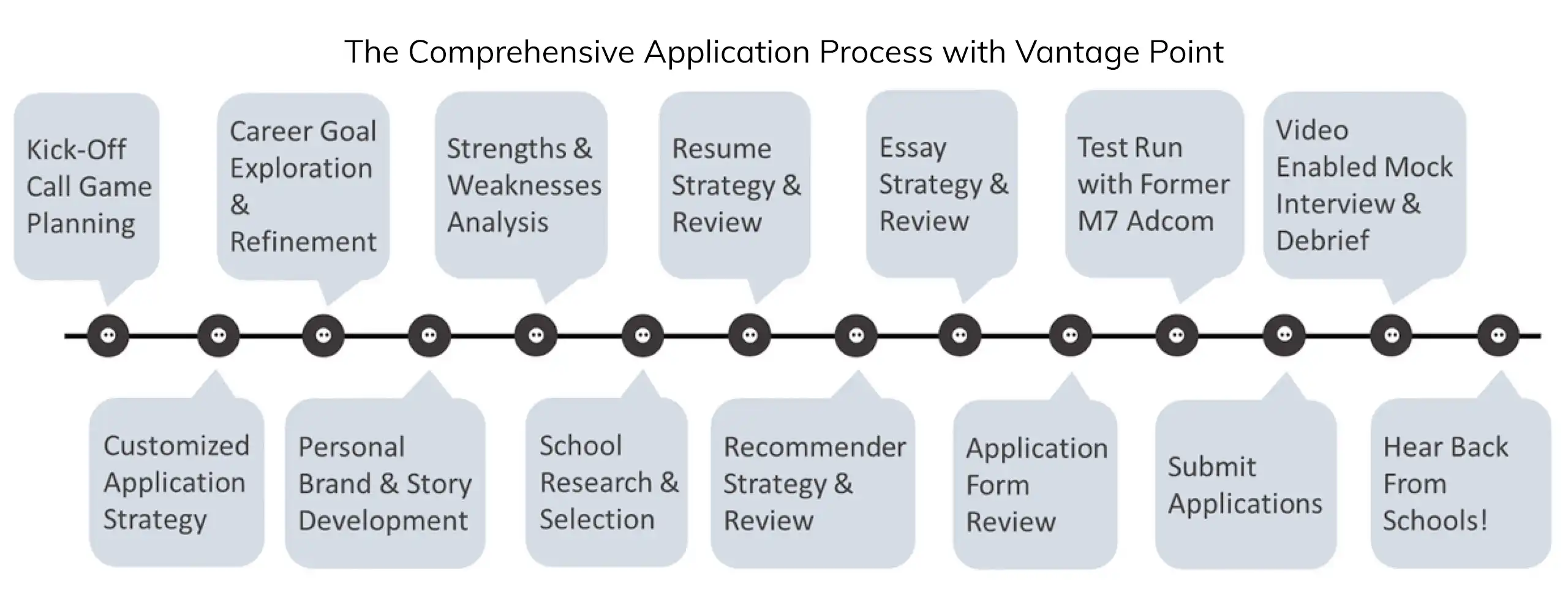Essay Advice – Dartmouth Tuck
You may have seen that Businessweek recently reaffirmed its #2 ranking for Tuck amongst US MBA Programs. While specific rankings are of debatable importance, there’s no doubt that Tuck has amazing attributes to offer – beautiful surroundings, a personalized experience, and a passionate alumni base are a few that come to mind. If you’re applying to Tuck, here is what you need to know.
Application Run Down
Deadlines
- Round 1 – September 27, 2021
- Round 2 – January 3, 2023
- Round 3 (please don’t wait for Round 3) – March 28, 2022
Essay Prompts
- Tuck students can articulate how the distinctive Tuck MBA will advance their aspirations. Why are you pursuing an MBA and why Tuck? (300 words)
- Tuck students recognize how their individuality adds to the fabric of Tuck. Tell us who you are. (300 words)
- Tuck students are encouraging, collaborative and empathetic, even when it is not convenient or easy. Describe a meaningful experience in which you exemplified one or more of these attributes. (300 words)
How To Tackle The Tuck Essays
Tuck devotes an entire page on its website to ‘admissions criteria’ – the four characteristics it seeks in successful applicants: smart, accomplished, aware and encouraging. ‘Smart’ and ‘accomplished’ are basically givens for any highly regarded MBA program. However, ‘aware’ and ‘encouraging’ are a bit more nuanced. After you have solid drafts of your essays, be sure to revisit these criteria and ask yourself (or a trusted friend) whether they come to the forefront. While not the topic of this article, make sure your recommendations showcase these characteristics as well.
Thorough Research About Tuck Should Be the Backbone of Each Essay
Even more than other schools, Tuck really cares that you’ve taken the time to understand what makes its program unique and why its specific resources fit your goals. Pre-COVID, this was one school we highly, highly encouraged our clients to visit for exactly this reason. In today’s world, attend enough events and do enough networking to replicate the knowledge you would have gleaned from the full-scale campus experience (class visit, lunch with students, chat with admissions, etc).
Also, take the time to thoroughly reflect on why what you’ve learned matters for your specific circumstances – the way you learn, the skills you are looking to build in school, the connections you need to form. Then, thoughtfully communicate these insights in your essays. Essay one is the obvious place for this, but essay two is another good place to highlight the parts of your personality that will make you a great ‘Tuckie’.
Use Stories to Highlight A Few Distinct Characteristics in Essay Two
While essay three specifically asks you to tell a story, using stories to ‘show not tell’ who you are in essay two is also an optimal strategy. You can claim all day long that you are curious, team-oriented, adventurous, or whatever the case may be, but it’s hard to make this believable if it’s not backed up with an example that demonstrates it.
Given the scant word count, selectivity is key. What are the two or three things (personality traits, elements of your background, values, etc) that really define who you are? Filter these through Tuck’s four criteria and select the two (or even one, if robust enough) that you don’t highlight elsewhere in the application and align with your personal brand.
After using a brief story or two to demonstrate your selected quality(ies), spend a short paragraph extrapolating how these traits will play out at Tuck and why they will allow you to better the experience of your classmates.
Take a Clue From the Change to the Third Prompt
While not a wholesale divergence from last year, Tuck has added the word ‘encouraging’ to this year’s prompt. The prior prompt asked for a time you helped someone succeed and that’s still a good way to frame up this question in your head as you brainstorm potential stories. Once you have some options, filter them (once again) through Tuck’s criteria and, more specifically, the attributes they’ve listed in the prompt (especially ‘encouraging’) to settle on the ideal one to use.
As you write, be sure to spend the bulk of the content describing your actions in detail. Frame up the context as briefly and simply as you can so that you can maximize the space devoted to the nuances of your approach – beyond the actions you took, drill into your thoughts, words, etc. The word count is limiting, so it will take some trial and error to get this right.
If you need help with your MBA applications, including Tuck, click here to schedule an initial consultation.
Katie is a passionate mentor and coach, helping her clients craft a unique, compelling story by leveraging her experience as a corporate executive, alumni interviewer, and campus recruiter. Before completing her MBA at Kellogg, Katie spent five years in banking where she learned practical finance skills as well as how to operate in a demanding, high pressure environment. She pursued an MBA in order to transition to an industry role where she could utilize her finance knowledge to drive change within an organization. Post-MBA, she worked in finance and strategy for a leading CPG firm, progressing to an executive role leading the finance function for a $2B business segment. Her experience managing diverse teams led to a passion for developing others. In addition to her day-to-day responsibilities, she led her firm’s MBA recruiting efforts and served as an alumni admissions interviewer for Kellogg.



